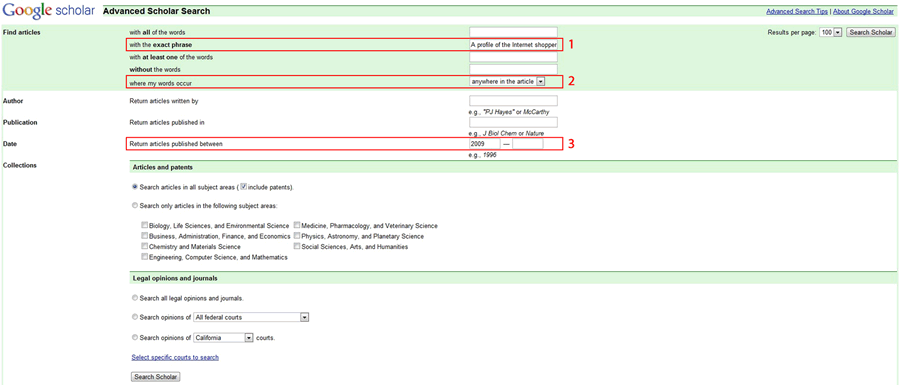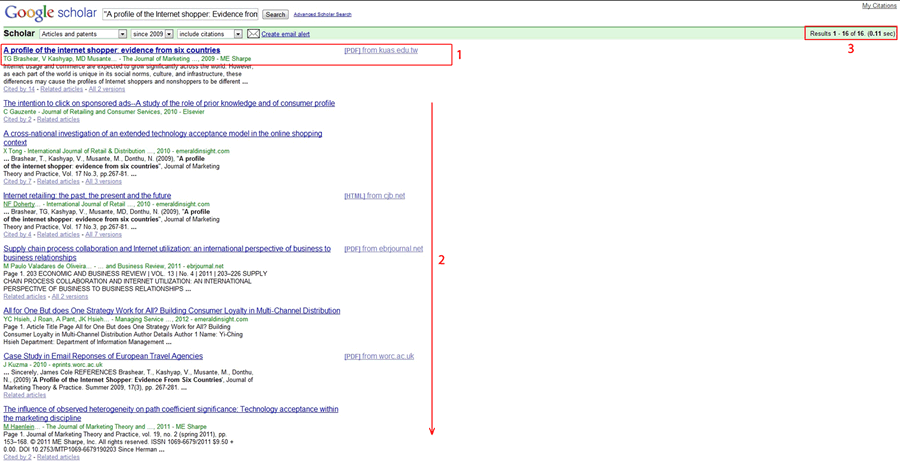STEP C
Assess what criticism and support the main journal article has received in the literature
When you are critically assessing the main journal article, it can be helpful to find out what other authors have said about the main journal article. Such comments can come from a range of sources (i.e., journal articles, books, conference papers, other dissertations and theses, etc.). After all, as soon as your main journal article was published, other researchers would have looked to (a) build on it, just as you are, (b) use it to build the theoretical case for their research; and/or (c) criticise one or more aspects of it. Such critiques can be positive, neutral in nature, or negative, but all help to identify the potential weaknesses and strengths of your main journal article. They will also become useful when you come to critically evaluate your main journal article in the Literature Review chapter of your dissertation write up (usually Chapter Two: Literature Review) because you can reference these sources to support the arguments you are making.
In order to identify what criticism and support your main journal article has received in the literature, we suggest using Google Scholar to pick out relevant sources (i.e., journal articles, books, conference papers, other dissertations and theses, etc.) that have cited your main journal article somewhere in the text. We show you how to do this next, before explaining what to try and pick out from these sources. To start the process, look at the image below [NOTE: we have highlighted the points to look at in red]:

The numbers in red in the image above match those below. Therefore, to start the process:
Go to Google Scholar (see: http://scholar.google.com/)
Click on the Advanced Scholar Search link.
In the diagram below, we have highlighted the parts of Google Scholar you need to consider next [NOTE: we have highlighted these parts in red]:

The numbers in red in the image above match the steps below. Therefore, to start the process:
Enter the title name of the main journal article. Enter the name of the sub-field (i.e., area of the literature) within the with the exact phrase search box in the Find articles section. For the purposes of this example, let's imagine that your main journal article is, A profile of the Internet shopper: Evidence from six countries, published in the Journal of Marketing Theory and Practice in 2009. In this instance, there is no need to enter the search term double quotation marks (i.e., "...").
In the drop-down box for where my words occur in the Find articles section, do not change the drop down from anywhere in the article, which is the default option.
In the Date section, we recommend entering the year in which the main journal article was published (e.g., in our example, we entered 2009 as the publication date, which will return all articles published during and after 2009). This will avoid search results being returned of references (i.e., sources) used in the main journal article, which would clutter your search results.
Finally, click the Search Scholar button.
Below is the first part of the list of articles returned for our search:

From the search results above, we can see that the main journal article appears first (1), and that a total of 15 other sources (3), which include books, conference papers, and theses or dissertations are returned (2). As mentioned before, your university may have paid to get access to these sources, but if not, simply read as many as you do have access to. When working through each source (e.g., the second source, The Intention to click on sponsored ads ? A study of the role of prior knowledge and of consumer profile by Gauzente, published in the Journal of Retaining and Consumer Sciences one year after the main journal article in 2010), search for the in-text citation of your main journal article. When searching for the in-text citation, always search using the surname of the first author of your main journal article (e.g., in our main journal article, A profile of the Internet shopper: Evidence from six countries, this would be Brashear). You need to do this because where there are three or more authors, many referencing styles only cite the first author, using the surname only, followed by the abbreviation, et al., so you may otherwise struggle to quickly find the relevant citation in-text.
When you find the relevant in-text citation that refers to your main journal article (i.e., Brashear et al., 2009), read what the authors (i.e., Gauzente, 2010) have to say about this journal article. What they say about may not always be insightful because there can be a tendency for academics to support their research by quoting other research without actually critiquing the references they use. However, for the most part, reading what has been said will reveal positive and negative critiques of your main journal article. In addition, where the authors have cited your main journal article, and the way that they use it to support the arguments they put forward will illustrate how your main journal article is being positioned in the literature (i.e., it will reflect their value judgement about the main journal article).
When working through these sources, you may also find other journal articles where similar research has been published by other academics. After all, it is common for more than one academic (or group of academics) to be pursuing similar research interests at the same time, but also independent of each other. If there are such journal articles in your search results, these will be particularly helpful when comparing the choices made in your main journal article (i.e., all kinds of choices from the main theoretical arguments being put forward, the constructs being used and their relationships, the research strategy adopted, etc.).
STEP D
Identify factors that you consider to be the main limitations of the main journal article
Broadly speaking, the research limitations that you will be able to identify within the main journal article will fall under three main types: (a) theoretical and conceptual problems; (b) limitations relating to the research strategy adopted; and (c) problems of research quality. Another major limitations can be the inability of the authors to properly answer their research questions or hypotheses, but for the most part, such research should never have gotten past the review process (i.e., it should not have be published), so hopefully you will not have to deal with this type of research limitation.
At this stage, you should have (a) identified the limitations of the main journal article that were highlighted by the authors, and (b) understood the critique of your main journal article in the literature, whether positive or negative. However, you now have to make your own assessment, drawing on these critiques, of what you consider the main limitations of the main journal article to be. To do this, think about (a) limitations that both the authors identified, as well as academics in other publications, and (b) limitations that were commonly identified by academics in other publications. In STEP THREE that follows, you will need to consider these main limitations carefully and assess how they support not only your chosen route, but the approach you adopted within that route.